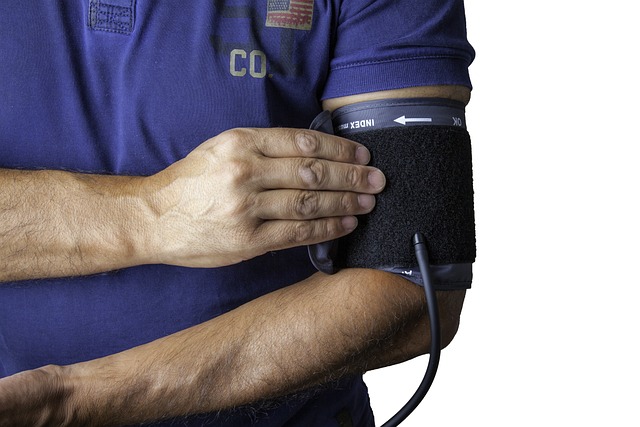Understanding Bladder Cancer
Bladder cancer can sometimes present with subtle symptoms, such as frequent urination or mild discomfort. Recognizing these early signs and learning about available treatments can help individuals seek timely medical advice and make informed decisions about their health.

What are the most common early symptoms of bladder cancer?
Recognizing the early signs of bladder cancer is vital for timely diagnosis and treatment. The most common symptom is blood in the urine, also known as hematuria. This can range from a slight pink tinge to a more obvious red color. It’s important to note that blood in the urine may not be constant and can appear intermittently. Other early symptoms include:
-
Frequent urination
-
Painful urination
-
Urgency to urinate even when the bladder isn’t full
-
Lower back pain on one side of the body
-
Unexplained weight loss or fatigue
While these symptoms can be indicative of other conditions, it’s crucial to consult a healthcare professional if you experience any of them persistently.
How is bladder cancer diagnosed?
Diagnosing bladder cancer involves a series of tests and procedures to accurately determine the presence and extent of the disease. The process typically begins with a thorough medical history and physical examination. Following this, several diagnostic tools may be employed:
-
Urine cytology: This test examines urine samples under a microscope to look for cancer cells.
-
Cystoscopy: A thin, lighted tube is inserted through the urethra to visualize the bladder’s interior.
-
Imaging tests: CT scans, MRIs, or ultrasounds may be used to get detailed images of the bladder and surrounding tissues.
-
Biopsy: If abnormal areas are detected during cystoscopy, tissue samples are taken for further examination.
These diagnostic procedures help healthcare providers determine not only the presence of cancer but also its stage and grade, which are crucial factors in developing an effective treatment plan.
What are the current treatment options for bladder cancer?
Treatment for bladder cancer varies depending on the stage, grade, and individual patient factors. The main treatment options include:
-
Surgery: This can range from transurethral resection of bladder tumor (TURBT) for early-stage cancers to radical cystectomy (removal of the entire bladder) for more advanced cases.
-
Intravesical therapy: Medication is directly administered into the bladder to treat early-stage cancers or prevent recurrence.
-
Chemotherapy: Systemic treatment used to kill cancer cells throughout the body, often used before or after surgery.
-
Radiation therapy: High-energy beams are used to destroy cancer cells, sometimes in combination with chemotherapy.
-
Immunotherapy: This treatment boosts the body’s natural defenses to fight cancer cells.
The choice of treatment depends on various factors, including the cancer’s stage, the patient’s overall health, and personal preferences. Often, a combination of these treatments is used for optimal results.
Are there any risk factors that increase the likelihood of bladder cancer?
Several factors can increase an individual’s risk of developing bladder cancer:
-
Smoking: This is the most significant risk factor, responsible for about half of all bladder cancer cases.
-
Occupational exposure: Certain industries involving chemicals, dyes, or rubber may increase risk.
-
Age: The risk increases with age, with most cases diagnosed in people over 70.
-
Gender: Men are more likely to develop bladder cancer than women.
-
Race: Caucasians have a higher risk compared to other racial groups.
-
Chronic bladder inflammation: Conditions like recurrent urinary tract infections may increase risk.
-
Personal or family history of bladder cancer
-
Certain medications or herbal supplements
Understanding these risk factors can help individuals make informed lifestyle choices and discuss potential screening options with their healthcare providers.
What advancements have been made in bladder cancer treatment?
Recent years have seen significant advancements in bladder cancer treatment, offering new hope for patients:
-
Immunotherapy breakthroughs: Checkpoint inhibitors have shown promising results in treating advanced bladder cancer by helping the immune system recognize and attack cancer cells.
-
Targeted therapies: These drugs target specific genetic mutations in cancer cells, potentially offering more effective and less toxic treatment options.
-
Enhanced surgical techniques: Robotic-assisted surgery has improved precision in bladder cancer surgeries, potentially leading to better outcomes and faster recovery.
-
Bladder-sparing approaches: Combination therapies using chemotherapy and radiation are being refined to preserve bladder function in some cases where previously total removal was the only option.
-
Personalized medicine: Genetic profiling of tumors is allowing for more tailored treatment strategies, optimizing effectiveness while minimizing side effects.
These advancements are continually evolving, offering new possibilities for bladder cancer patients and improving overall survival rates and quality of life.
Understanding bladder cancer, from its early symptoms to the latest treatment options, is crucial for both prevention and effective management. While a diagnosis can be daunting, the ongoing advancements in medical science offer increasing hope for those affected by this disease. Regular check-ups, awareness of risk factors, and prompt attention to potential symptoms remain key in the fight against bladder cancer.




